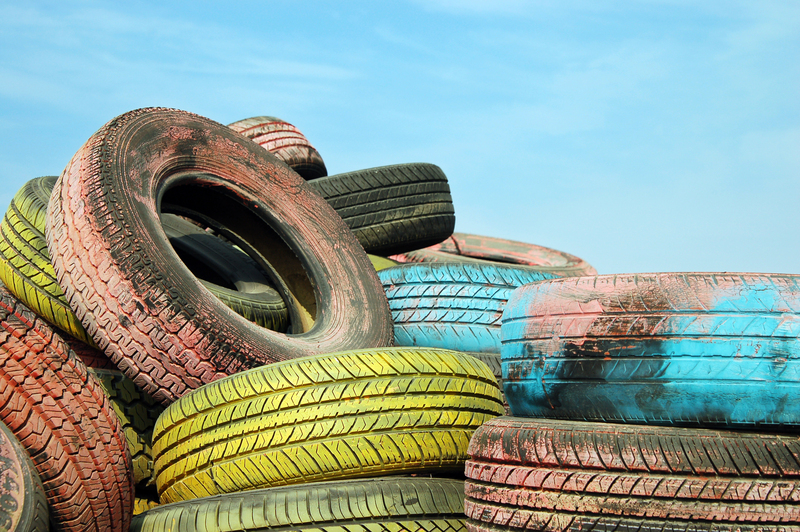A Citizen's Guide to Safe PPE Waste Disposal
PPE (Personal Protective Equipment) has become a household term, especially since the rise of global health crises such as COVID-19. Items like masks, gloves, face shields, and gowns are crucial for personal and public safety. However, improper disposal of PPE can lead to environmental pollution and health hazards. This comprehensive guide helps citizens understand the correct practices for safe PPE waste disposal, ensuring both environmental integrity and public health.
Understanding PPE Waste: What Is PPE?
Personal Protective Equipment, or PPE, includes any wearable item designed to protect the wearer from injury or infection. Common examples used by the general public are:
- Masks (disposable and reusable)
- Gloves
- Face shields
- Disposable gowns
- Shoe covers
Since the start of the pandemic, the usage of single-use PPE has skyrocketed, producing an unprecedented wave of waste. Understanding the types of PPE and their composition is the first step in mastering PPE waste management.
The Environmental Impact of Improper PPE Disposal
Mismanaged PPE waste is a growing environmental concern. Discarded masks and gloves are frequently found on streets, parks, rivers, and oceans. They pose risks such as:
- Polluting waterways: Disposable PPE items often break down into microplastics, harming marine life and contaminating the food chain.
- Hazards to wildlife: Animals can become entangled in masks or ingest plastic gloves, leading to injury or death.
- Human health threats: Improperly discarded PPE may be contaminated, exposing sanitation workers and the public to pathogens.

Why Is Safe PPE Disposal Important?
Proper PPE disposal is crucial for several reasons:
- Public Health: Ensures used PPE does not spread infectious diseases.
- Environmental Protection: Prevents PPE waste from polluting ecosystems.
- Regulatory Compliance: Fulfills legal and community guidelines to avoid fines and penalties.
Awareness and individual action make a collective impact in keeping PPE waste under control.
How to Safely Dispose of PPE at Home
The first place to start practicing proper PPE disposal is your own home. Follow these steps for safe PPE disposal:
- Do Not Recycle Used PPE: Masks, gloves, and other PPE should never go in your recycling bin. They can contaminate recyclables and pose risks to recycling workers.
- Bag Your PPE: Place used PPE in a bag before disposal. Double-bag if the PPE is heavily contaminated (for example, if someone in the household is sick).
- Tie the Bag Securely: Make sure the bag is tightly closed to prevent materials from escaping. This reduces the risk of contamination.
- Place in General Waste: Dispose of the bag in your general waste or landfill bin--not the compost or recycling bin.
- Wash Hands Thoroughly: After handling used PPE and touching waste bins, wash your hands with soap and water for at least 20 seconds.
Special Considerations for Reusable PPE
If you're using reusable masks or face shields:
- Disinfect and Launder: Wash cloth masks regularly with hot water and detergent. Face shields can be wiped with disinfectant wipes.
- Check for Wear and Tear: Dispose of reusable PPE if it becomes damaged.
Public Spaces and Workplace PPE Waste Management
Proper PPE waste management in workplaces, schools, hospitals, and public spaces is critical. These environments should have visible, dedicated disposal points. Here's what citizens can expect or advocate for:
- Clearly Marked Bins: Distinct bins labeled for PPE only, ideally with foot pedals to avoid touching lids.
- Regular Emptying: Waste collection should be scheduled frequently to prevent overflow and contamination.
- Information Posters: Posters and information on proper PPE disposal locations and procedures encourage compliance.
What About Medical Facilities?
Medical facilities generate large quantities of PPE waste. They follow strict biohazard protocols enforced by local waste regulations. While citizens do not handle medical waste directly, it is important to dispose of your PPE properly if you visit such facilities.
Innovative Approaches to PPE Waste
Governments, scientists, and innovators are developing new strategies for PPE waste disposal and recycling. Some noteworthy initiatives include:
- PPE Recycling Initiatives: Specialized facilities are experimenting with recycling discarded masks into construction materials such as bricks and road surfaces.
- Compostable PPE: Companies are designing biodegradable masks and gloves from natural fibers, which break down much faster than conventional plastics.
- Public Awareness Campaigns: Educational programs teach the public about the dangers of littering PPE and proper methods for its disposal.
If your community has a PPE recycling pilot, support it! Otherwise, stick to approved disposal methods to avoid eco-hazards.
The Role of Extended Producer Responsibility (EPR)
*Governments and environmental groups are calling for manufacturers to take responsibility for PPE waste,* through programs that collect and recycle used PPE. This approach shifts some burden from citizens and waste workers back to producers.
Legal Guidelines and Regulations on PPE Disposal
Most countries and municipalities have established regulations concerning PPE waste disposal:
- No PPE in recycling: It threatens the integrity of recycled materials and the safety of workers.
- PPE as non-recyclable waste: Treat as general/domestic refuse unless otherwise directed.
- Penalties: Fines and legal action may result from illegal dumping of PPE.
Stay Updated on Local Guidelines
PPE disposal regulations are subject to change, especially in response to health emergencies. Regularly check your local government's official website and public health notifications for updated advice.
Reducing PPE Waste: Prevention is the First Step
The best way to minimize the impact of PPE is by reducing the amount of waste generated. Here's how you can help:
- Whenever possible, *choose reusable PPE*, such as cloth masks or washable face shields.
- Encourage the use of durable PPE in your workplace or community.
- Dispose of single-use items responsibly to prevent littering and environmental contamination.
Alternatives to Disposable PPE
- Cloth Masks: Provide similar protection in many situations and can be reused after washing.
- Washable Gowns: Suitable for caregivers and healthcare staff outside of acute care.
- Personal Face Shields: Wipe clean and reuse, reducing waste.
PPE Litter: How Citizens Can Take Action
PPE litter is a visible reminder of the environmental impact of improper disposal. Here's what you can do:
- Don't Litter: Always carry a small bag or pouch to store used PPE until you can dispose of it properly.
- Community Initiatives: Join or organize PPE cleanup events in your neighborhood or local parks.
- Educate Others: Share information about the risks of PPE littering and safe disposal methods.
Safe Community Cleanups
When participating in or organizing a PPE cleanup, always wear protective gear, use litter pickers, and avoid direct contact with contaminated items. Dispose of the waste according to local guidelines.
Safe PPE Disposal: Frequently Asked Questions
Can I recycle my used mask or gloves?
No. Masks and gloves are not recyclable through ordinary curbside programs. They should go in the trash.
What should I do if I see PPE litter?
If it's safe, use gloves or a picker to collect the item, bag it securely, and place it in a garbage bin. Wash your hands afterwards.
How do I handle PPE if someone in my household is infected?
Double-bag the items, tie securely, and dispose of with general waste. Do not touch the outside of bags and wash hands thoroughly after disposal.
Are there alternatives to single-use PPE?
*Reusable masks and face shields* are excellent alternatives for everyday use by the general public.

Summary: The Citizen's Role in Responsible PPE Waste Disposal
Safe PPE waste disposal is a fundamental aspect of modern health and environmental safety. As citizens, each of us plays a vital role in ensuring that PPE waste is handled and disposed of properly. Here's a recap of best practices for citizens:
- Never dispose of PPE with recycling or compostables.
- Always bag PPE waste before placing in the trash.
- Wash your hands after any contact with used PPE.
- Stay informed about disposal programs and guidelines in your area.
- Reduce, reuse, and advocate for better waste solutions.
Take Action Today
PPE has become a new normal, but so must responsible PPE waste disposal. Protect your health, your community, and your planet by following these guidelines. Together, we can ensure that PPE saves lives--without costing the earth.
Resources for Further Information on PPE Waste Disposal
- US EPA: Safe COVID-19 PPE Disposal
- WHO: Advice on Mask Use
- NRDC: PPE Waste Disposal Guidelines
- UNEP: PPE Waste and Ocean Pollution
By making informed choices about how to dispose of PPE waste, every citizen contributes to a healthier environment and a safer tomorrow.
